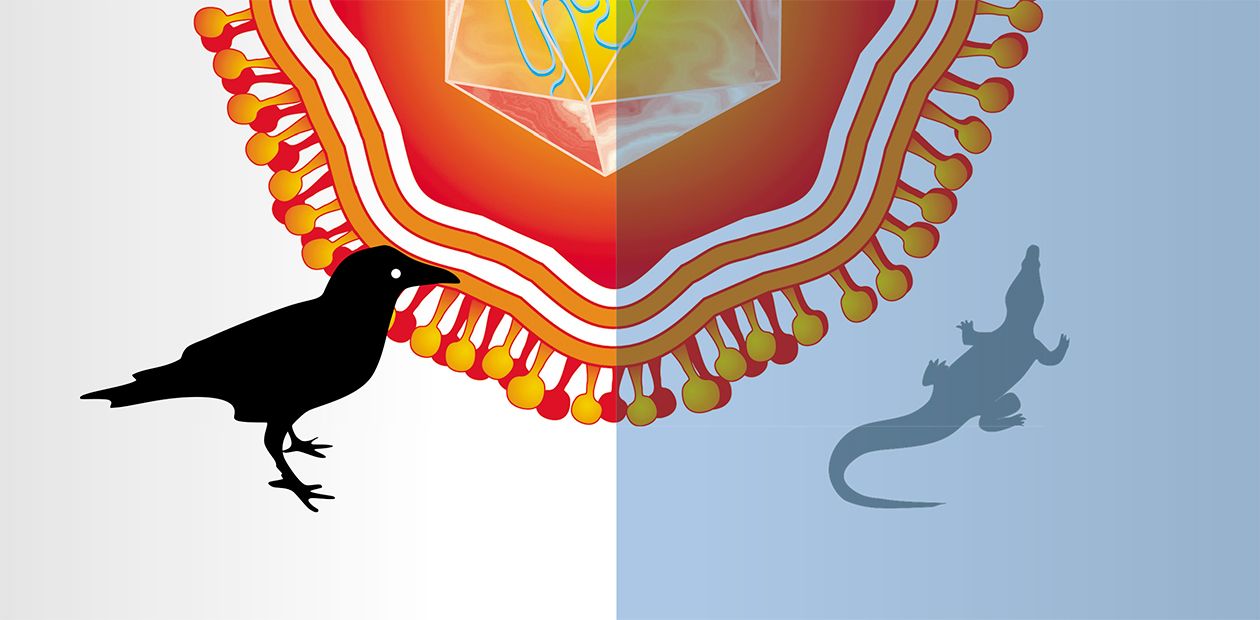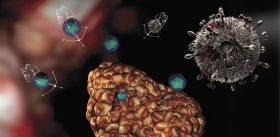West Nile virus: around the world
During the last decades, an almost “alien” menace has threatened humankind. The matter in hand is viruses— the most simply organized and minute organisms, possibly of extraterrestrial nature—which are still a battle ground as scientists continue to argue whether they are “living creatures” or a mere “substance”.
The state-of-the-moment trespasser on our life and health is the worldwide known swine flu virus. Luckily, West Nile virus is not so famous for the time being. However, the whole world is before it, judging, for example, from the information at the Novosibirsk city site. It is no coincidence that news about West Nile fever on the banks of the Ob River has beaten all records, leaving behind even the photo report on the Bikini Show
West Nile fever on the banks of the Ob River – sounds strange, does not it? Nonetheless, the name of this disease previously unknown in Siberia, caused by a flavivirus, is occurring ever more frequently in the glossary of our scientists and medical specialists.
How has it come about? Indeed, it has been considered for a long time that West Nile virus (WNV) is prevalent mainly in Africa and that even there it is unable to cause significant outbreaks among the aboriginal population. However, in the fall of 1999, the event that completely changed the attitude of experts to this infectious agent took place: outbreaks of West Nile fever were simultaneously recorded in Volgograd, Russia, and New York, United States, the cities separated by many thousand kilometers and the Atlantic Ocean (Campbell et al., 2002).
This became the starting point in the modern history of West Nile virus, included in the category of the so-called re-emerging infections, the list of which was supplemented practically annually at the end of the last and beginning of the current centuries.
Hostages of nature
Because of success in microbiology and medicine, it seemed in the mid-20th century that a complete defeat of the communicable diseases was close. However, it became clear as early as the 1970s that neither vaccines nor antibiotics nor interferons or other antiviral drugs were able to eradicate this long-standing curse of mankind. The only communicable disease defeated so far is smallpox.
West Nile virus was discovered in 1937 in Uganda. In the same year, the team of Soviet virologists headed by L. A. Zilber discovered tick-borne encephalitis virus in the Far East. Both viruses belong to the same genus and family, flaviviruses, named after yellow fever (from the Latin flavus for yellow).About 53 species of flaviviruses are currently known; the majority of them are able to cause severe diseases of humans and domestic animals
Nonetheless, all these prevention and therapeutic tools have provided not only for a life quality improvement of the populations in developed countries, but also for an almost hundredfold decrease in the mortality rate from infections (Lederberg, 1997). Despite all these undoubtedly significant achievements of medicine, the mortality from infectious diseases is second in the WHO list of the overall disease mortality. This means that about 15 million human beings annually die from infections, almost twofold more than from cancer.
Moreover, in the recent years, scientists have discovered ever more frequently new and very dangerous infections. Over 40 new diseases and the corresponding pathogens have been described during the last 30 years. Among them are the widely known viruses, such as Marburg, Ebola, hepatitis C, human immunodeficiency, atypical pneumonia, and avian influenza viruses, as well as the viruses whose names are well known only to experts – Nipah, Hendra, Alkhurma, and others. This is why the term emerging and re-emerging infections appeared (Morens et al., 2004). The most recent example is the influenza virus H1N1 nicknamed “swine flu”, which was discovered this year.
The discovery of each new infection entails the need to solve a set of scientific and applied problems. First and foremost, this is the development of a specific vaccine, diagnostic kits, and therapeutic tools.
Flaviviruses have considerably contributed to the problem of emerging and re-emerging infections. This is a genus of viruses with RNA genome, many of which have a wide range of invertebrate and vertebrate hosts. The most epidemiologically important flaviviruses are dengue, yellow fever, Japanese encephalitis, and tick-borne encephalitis viruses (Monath et al., 1995). These viruses, especially dengue virus, annually infect hundreds of millions people worldwide, with a mortality rate for certain diseases amounting to dozens of percent.
A characteristic specific feature of flaviviruses, including West Nile virus, is that they form the so-called natural foci, where they circulate due to the interactions between their vectors, blood-sucking arthropods, and various vertebrate hosts, which are natural “reservoirs” for the infection. As a rule, humans are an accidental victim and do not transmit the virus. Note that flaviviruses today can form the infection foci not only in natural ecosystems – the dwellers of megalopolises suffer from these diseases ever more frequently.
From the Mediterranean to America
The local outbreaks of West Nile fever in Israel, recorded in the mid-1950s, were the first to stimulate studies into the habitation area of this virus.
They rather quickly found out that this virus was widely abundant in Africa and was also found in the south of Europe and Asia. This virus is transmitted to humans with a mosquito bite and causes a benign fever with a recovery several days later.
According to the evolutionary tree constructed later based on the virological and genetic data, WNV had long ago spread over vast territories of three continents forming natural foci in the ecosystems of various types. These virus strains did not present any serious danger for humans and animals.
Today we can hardly find out which particular reason caused the emergence of a new WNV genetic variant in the Mediterranean. The majority of researchers agree that the history of this new variant commenced in 1994 from the outbreak in Algeria with 50 recorded infection cases and 8 lethal outcomes caused by severe viral encephalitis. The next outbreak was recorded two years later in Romania (453 cases with 9 % mortality rate). Unfortunately, these events failed to attract any special attention and were practically ignored by scientists.
An unsavory reputation came to West Nile virus in 1999, when it first entered Russia (Volgograd and Astrakhan) and, which is fundamentally important, the American continent. It took only three years for this virus to occupy practically the entire territory of the United States and the south of Canada. “Conquest” of Central and South Americas took several more years. Currently, thousands of severe West Nile fever cases are annually recorded in the United States and Canada.
And what is the situation in Russia? Three years after the outbreak in the Volga region, this virus appeared in West Siberia (south of the Novosibirsk oblast). It was first discovered in migratory birds and was soon followed by the first human cases. Approximately at the same time, the virus was recoded in the Primorsky krai (Ternovoi et al., 2007).
Actually this meant that the “Mediterranean” virus, having almost encompassed the world during several years, had spread worldwide in all the inhabited continents except for Australia.
Genetic investigation
Such “aggressive” behavior displayed by the new variant of West Nile virus is completely untypical of flaviviruses, whose circulation requires the presence of a constant natural focus. And it takes some time for this focus to form.
What is the reason for this blitz? First, the virus is transmitted literally “on the wings” due to its ability to retain up to 200 days in the body of migratory birds.
Second, a “promiscuity” of this virus, capable of reproducing in hundreds of avian species, tens of mosquito and tick species, mammals, and even reptiles, has played a tremendous role. Amazingly readily crossing the interspecies barriers, the new strain has formed its foci in most diverse climatic zones.
Among the less significant still undoubtedly important factors that have contributed to the rate of virus spreading are climatic and environmental changes, in particular, those resulting from man’s activities.
Such unusual epidemiologic data stimulated an active research into the genetic material of this pathogen. The genetic analysis has allowed the route of WNV spreading to be reconstructed rather quickly.
Sensitive to West Nile virus are mosquitoes (over 640 species); ticks, including ixodid ticks, the vectors of tick-borne encephalitis; birds (over 300 species, especially crows); and other vertebrates (over 300 species, including amphibians, reptiles, mammals, and humans)It has been found that the Romanian outbreak in 1996 was actually caused by WNV with the modern genotype (the Algerian strain of 1994 was not analyzed). The virus traveled from Romania to Israel, then crossed the Atlantic Ocean (presumably, by air with mosquitoes in planes) to reach the United States and Canada and continued its way to the countries of Central and South Americas. Another route of the virus led from Romania to the south of Russia and then, to the Pacific coast of Asia.
Researchers revealed another amazing characteristic of the new WNV variant – an extreme conservation of its genome, which is completely untypical of the majority of other RNA viruses.
The degree of genetic differences between different WNV isolates was so small that it made it possible to assess its genetic divergence in specific units – the number of new mutations per each 1000 km of the covered distance.
This value frequently did not exceed several hundredths of percent per thousands of kilometers. Note for comparison that the degree of genetic differences between, for example, Siberian and Far Eastern variants of the tick-borne encephalitis viruses can reach 18—20 %.
Viral roulette
WNV’s genetic stability, unprecedented for flaviviruses, suggested that the overall world “population” of this virus was actually the progeny of one clone of the Mediterranean origin.
Presumably, it was the changes in the nucleotide sequence of the virus genome that predetermined its unusual ability to infect a large number of mosquito, avian, and mammalian species. However, since the total genetic distinctions of the new strain from the previous variants are too small (no more than 5 %), the critical mutations that determined the current WNV distribution in the natural ecosystems of different continents still remain undetected.
The death of polar bears from WNV, recorded in Canada, demonstrates that the potential of this virus in expanding to new ecosystems is far from being exhausted. It cannot be ruled out that WNV can even reach Antarctica with migratory birds.
As was mentioned above, humans are sensitive to this new WNV gene variant. The majority of human cases are recorded in the second half of summer and in autumn. The incubation period after the bite of an infected mosquito is 4—8 days. The disease commences with elevation in body temperature and most frequently develops into a fever varying in its severity and duration. This form of disease is very similar to a common influenza; consequently, it is frequently diagnosed incorrectly.
Some patients develop viral encephalitis and meningoencephalitis, severe forms of the disease requiring hospitalization. The clinical pattern in this case resembles that of the tick-borne encephalitis. The prognosis is also similar with a mortality rate up to of 10 % and more. The disease course of children is much milder as compared with the adults and elderly cohort.
However, the infection does not obligatory end in the disease; as a rule, the disease does not develop or proceeds asymptomatically in eight to nine cases of ten. Although the health of these people is out of danger, they can present a menace as blood donors or organ donors. The lethal cases recorded after blood transfusion or transplantation of organs made the US Government approve an obligatory testing for WNV of blood preparations and donor organs.
On Russian shores
In this country, West Nile fever is usually associated with the region of the Caspian Sea and delta of the Volga River (L’vov et al., 2002). According to random serological testing, the majority of local population has had this disease in a certain form. Severe forms of West Nile fever requiring hospitalization have been recorded there annually.
Serological sampling in the south of Siberia and the Primorsky krai demonstrates that almost every fifth individual has been infected with WNV or has had the disease.
A hypothesis postulates that low sensitivity of humans to West Nile virus and other flaviviruses, for example, tick-borne encephalitis virus, is genetically determined. However, the genes determining this resistance have not been discoveredUnfortunately, the cases of diagnosing West Nile fever correctly are single. To solve this problem, experts from the State Research Center of Virology and Biotechnology Vector in collaboration with the joint stock company Vector-Best have designed and are producing the kits for diagnosing human cases and monitoring WNV circulation in nature. These diagnostic kits are already used in various regions of this country and have been highly appreciated.
Thus, the diagnostic problem for this new disease has been solved, whereas the situation with its therapy and prevention is quite different. The available antivirals are rather inefficient against WNV. The vaccines and virus-neutralizing antibodies able to provide an efficient protection from the flaviviruses, such as the Japanese and tick-borne encephalitis, have been developed; however, there are no such preparations for WNV. The explanation is quite simple – there was no need in these preparations until the emergence of new WNV genotype.
The vaccine and immune prophylaxes of West Nile fever is the current concern not only in this country, but also worldwide. Many laboratories and research centers are involved in intensive studies in this direction.
Since 1999, hundreds of papers on West Nile virus have been published annually. Russian scientists have also had some success in the research into the new WNV gene variant. The achievement of Siberian virologists is discovery of the fact that WNV had colonized the Asian part of Russia. The information that the virus appeared in the Primorsky krai (Ternovoi et al., 2006) caused certain mistrust in the scientific community; however, the fact of WNV circulation in the Far East was then confirmed by Moscow (2007) and Japanese (2008) researchers.Siberian scientists genotyped the virus isolated in the Asian part of this country, designed a kit for diagnosing West Nile fever, and developed a gene therapy method for prevention and treatment of severe West Nile fever
In particular, Vector’s experts have proposed a new method for WNV prevention and treatment based on gene therapy. The idea underlying this approach is very simple – to make the body synthesize highly efficient virus-neutralizing antibodies at the earliest stages of the disease, when the immune system itself cannot synthesize them yet (Pereboev et al., 2008).
The rest was a matter of techniques. The DNA region encoding the active center of virus-neutralizing antibodies was inserted into the gene encoding the IgG immunoglobulin, the main class of human protective antibodies. In turn, the modified gene was inserted into a specialized genetic construct, a carrier used in gene therapy.
A single administration of the resulting preparation at a dose of several nanograms can provide for the synthesis of the necessary antibodies in a human body in an amount sufficient for neutralizing the virus. Moreover, the protective effect of this preparation is retained for three weeks and more.
Testing in animals has demonstrated a high efficiency of this gene therapy for preventing and treating West Nile fever. However, we cannot expect that this method will be immediately adopted: several years of intensive work will be necessary to perform an additional testing of this preparation and elaborate a corresponding production technology.
Note that such approach can be successfully applied to the therapy of other severe flavivirus infections, in particular, tick-borne encephalitis. As in the case of most infections, the main problems are time and funding.
Now there are no doubts that West Nile virus is a real threat for the population and domestic animals in the vast regions of the Russian south. Recent appearance of this virus in the Novosibirsk oblast was an unpleasant surprise to Siberians. This virus supplemented the long list of highly pathogenic flaviviruses circulating in the south of Siberia, which also includes tick-borne encephalitis and Omsk hemorrhagic fever viruses.
Since many flaviviruses are avian-borne, appearance of other new dangerous diseases in the south of Siberia can be also anticipated. Therefore, it is necessary to continue monitoring the already known natural foci, detect new foci, and study the pattern and direction of evolutionary rearrangements in the genomes of infectious agents to improve the diagnosis, prevention and therapeutic tools.
It is true that forewarned is forearmed. It is impossible to eradicate the infections maintained by a number of natural mechanisms without a complete destruction of natural ecosystems. However, we can minimize the damage they cause to the human health and life.
References
Ternovoi V. A. et al. Detection of West Nile fever in the Novosibirsk oblast in 2004 and genotyping of the virus causing the disease // Vestnik Ross. Akad. Med. Nauk, 2007. – No. 1. – P. 21—26.
Ternovoi V. A. et al. Genotyping of the West Nile virus detected in birds in the south of the Primorsky krai in 2003–2004 // Mol. Genet. Mikrobiol. Virusol, 2006. – No. 4. – P. 30—35.
Pereboev V. et al. Genetically delivered antibody protects against West Nile virus // Antiviral Research, 2008. – V. 77(1). – P. 6—13.








